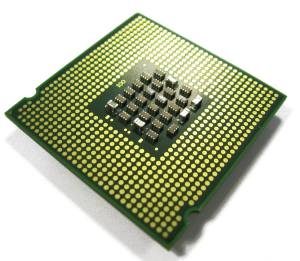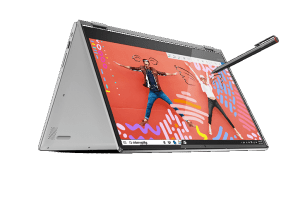
Choosing The Right Business Laptop
Buying laptops can be tricky, especially as the market is seemingly saturated with hundreds of varieties with very similar specifications. This article will help teach you what features and qualities to look for when choosing your next business laptop.
There is no one ‘best laptop’, all manufacturers optimise their product lines for different types of uses and price points which may make one model perfect for one application, but less ideal for another. The common trap when buying or recommending a laptop for business is to buy the fastest and in most cases one of the most expensive gaming laptop in the available which can be one of the worst of things.
Processor and Memory
When comparing laptops the most common specification to compare against is the processor (CPU) and memory (RAM), these components have the largest direct impact on performance.
For most office workloads an Intel i5 or AMD Ryzen 5 and 8GB offers more than enough performance while still remaining cost effective. More demanding workloads such as media editing or heavy virtualisation an Intel i7 or Ryzen 7 and 16GB may be beneficial.
Traditionally AMD chipsets were seen as the cheaper and lesser performing brand compared to Intel, this is no longer true with the latest mobile Ryzen chips performing similarly in terms of performance and power consumption. It is fair to compare Intel’s i5/i7 product lines against AMD’s Ryzen 5/7 line side by side.
Graphics Card
Integrated graphics have come along way in the past 5 years and both chipmakers have built small graphic cards into there mobile processors. Currently the latest AMD Ryzen CPU’s with Vega offers better graphic performance over the comparable Intel UHD 620 chipsets.
In most cases you would be worse off buying a laptop with a dedicated graphic card due to the lower battery life, thicker chassis, greater noise and higher purchasing cost. The only real need for a dedicated graphics in the business world is for 3D modelling and high resolution video editing.
Storage
The introduction of affordable Solid-State Drives (SSD’s) has been the biggest revolution for personal computers in the last 10 years. Compared to hard disks which use spinning a spinning disk they are several times faster, have better power efficiency and are much more reliable.
While you pay a premium GB of storage, your next laptop (or computer in general) should have at-least a 128GB SSD, preferably 256GB. Centralised storage on NAS devices and wider use of the cloud have removed the need for large 1-2TB in most cases.
Screen and Keyboard
A good keyboard and quality screen is a requirement of a business laptop which will predominantly be used for long hours and heavy use.
While how a keyboard feels is subjective, the keyboard shouldn’t flex when typing or bottom out and should have good feedback when a key is pressed. If you find yourself in excel a laptop with a full size number pad should be high in your considerations , likewise if you find yourself using the laptop in dark places such as planes a backlit keyboard is invaluable.
Laptops are built around their screen, common screen sizes are 13-14” most suitable for portability, 15-16” the best compromise between portability & usability and lastly 17-18” which are commonly used as desktop replacements.
It’s more than just size which makes a good screen. To minimise eye fatigue and maximise text readability a laptop with a Full HD display (FHD/1080p) should be selected. Ultra high resolution 2K/4K displays are available on some models however they tend to consume more power (shorter battery life), cost significantly more and may not noticeably increase display quality.
Construction
While the majority of laptops contain very similar components and perform similarly with the same components,not all laptops are built equally!
Generally speaking the more you pay, the better quality materials and design has gone into the device such as a more rigid durable chassis materials using magnesium, aluminium, carbon fibre and use better quality hinges to take the abuse of daily use without adding extra weight.
The second most important consideration of how it is built, is if it was designed to be serviced or upgraded. Many modern laptops cannot be easily serviced by the end user and do not have a supply chain of affordable spare parts. If serviceability is important for yourself or organisation be sure to confirm if the device has a removable battery and that there is a removable cover for the memory and storage.
Professional Features
Larger organisations may Windows 10 Professional on devices as opposed to Windows 10 Home found on consumer devices. Core differences between the versions are the ability to join a Windows Domain, Bitlocker and the ability for the device to be managed with group policies. Additionally enterprises users may require the devices with CPU which support Intel vPro. If your in doubt, contact your organisations IT department.
If your always on the move, make sure you consider if you need a laptop which supports docking stations, this quite simply allows your laptop to be your desktop! For users that are always running out battery, consider a laptop which supports Hot-Swap batteries or ‘battery slices’ which can be added for extended runtime.
Recommendations (2018 – 2019)
Everyday Business Use: These laptops won’t win any performance or style awards but they are built for the real world offering great reliability, durability and connectivity at affordable prices.
- Lenovo Thinkpad T480: Built like a tank and a true workhorse of the laptop world with enough power for most business workloads. Reliable and very easy to service with a full range of accessories./li>
- Dell Latitude 5490: It won’t turn heads, but this latitude is solid and well performing in all areas and won’t break the bank. Like the Thinkpad, it is designed for business in mind and is easily serviceable and supports Dell docking station.
- HP EliteBook 840 G5: A very stylish and practical laptop packed full of the latest technology while still maintaining serviceability and HP UltraSlim Docking Station.
Ultra Premium: If you only settle for the best, these laptops offer maximum portability with no compromise on performance.
- Lenovo X1 Carbon: It’s not cheap, but its the ultimate business ultrabook offering the trusted Thinkpad reliability, class leading performance and features weighing just 1.13kg!
- Dell Latitude 7490: If you love your Latitudes it uses premium materials and is packed with the latest assortment of security features and technology at an affordable price.
Powerhouses: For those with demanding 3D workloads which requires the performance of a workstation but in a laptop.
- Lenovo ThinkPad P52: You’ll want to sit down when you see the price, but this Thinkpad ships with an I7 and Quadro P1000 or Xeon, Quadro P2000 and ECC ram combination. The laptop holds ‘IVS certification’ for leading 3D modelling vendors ensuring critical applications run optimally.
- Dell Precision 7530: Stay seated,this notebook will sting the wallet as-well. Like the P52 features premium materials, choice of either a AMD Pro or Nvidia Quadro graphic card and either a i5,i7,i9 or Xeon processor. For professional workloads this notebook will keep up.
- Dell XPS 15: Targeted at those with photographic touch, this compact notebook features a stunning 4K touchscreen display with 100% Adobe RGB colour. Shipping with either Intel Integrated UHD 530 graphics or a Nvidia 1050ti dedicated graphic card this machine is far more affordable than its brothers above.
- Lenovo A485: If you need strong graphic performance beyond standard integrated graphics at an unbeatable price without sacrificing reliability or functionality the A485 is a very tempting buy. Based on the AMD Ryzen 5 and 7 chipset with built in Vega graphics it offers graphic performance comparable to a dedicated laptop graphic card.
2 in 1: The perfect boardroom companion
- Lenovo Yoga 530: If you want a laptop that can fold in half the Yoga 530 does just that however with its cheapest configurations shipping without a stylus or FHD display.
- Dell Inspiron 13 7000 2 in 1: Smaller than the competition, it ships with a 13″ FHD IPS touch screen, USB-C, stylus and 256GB SSD. Weighing in at 1.6KG its not the lightest 2 in 1 notebook but it does offer great value.
Budget Friendly: Not everyone can sink thousands into reliable laptop. Thankfully there are options if you can make compromises.
- Lenovo E485: Priced under $1000 the E series of Thinkpads ships with only the essentials needed for business. It ships with the same cpu/graphics as the Lenovo A485 and is matched with FHD (1920×1080) LED IPS display. In its base configuration the notebook has a 256GB M2 SSD for speedy performance with the ability to be expanded with a 2.5″ drive and ships with Windows 10 Home which can be upgraded to Pro in the shopping cart. It misses out on a built in fingerprint reader and can use a USB3 docking station. For general office without compromising on performance its an extremely good deal.
What features do you find important in a laptop? Let us know in the comments below
